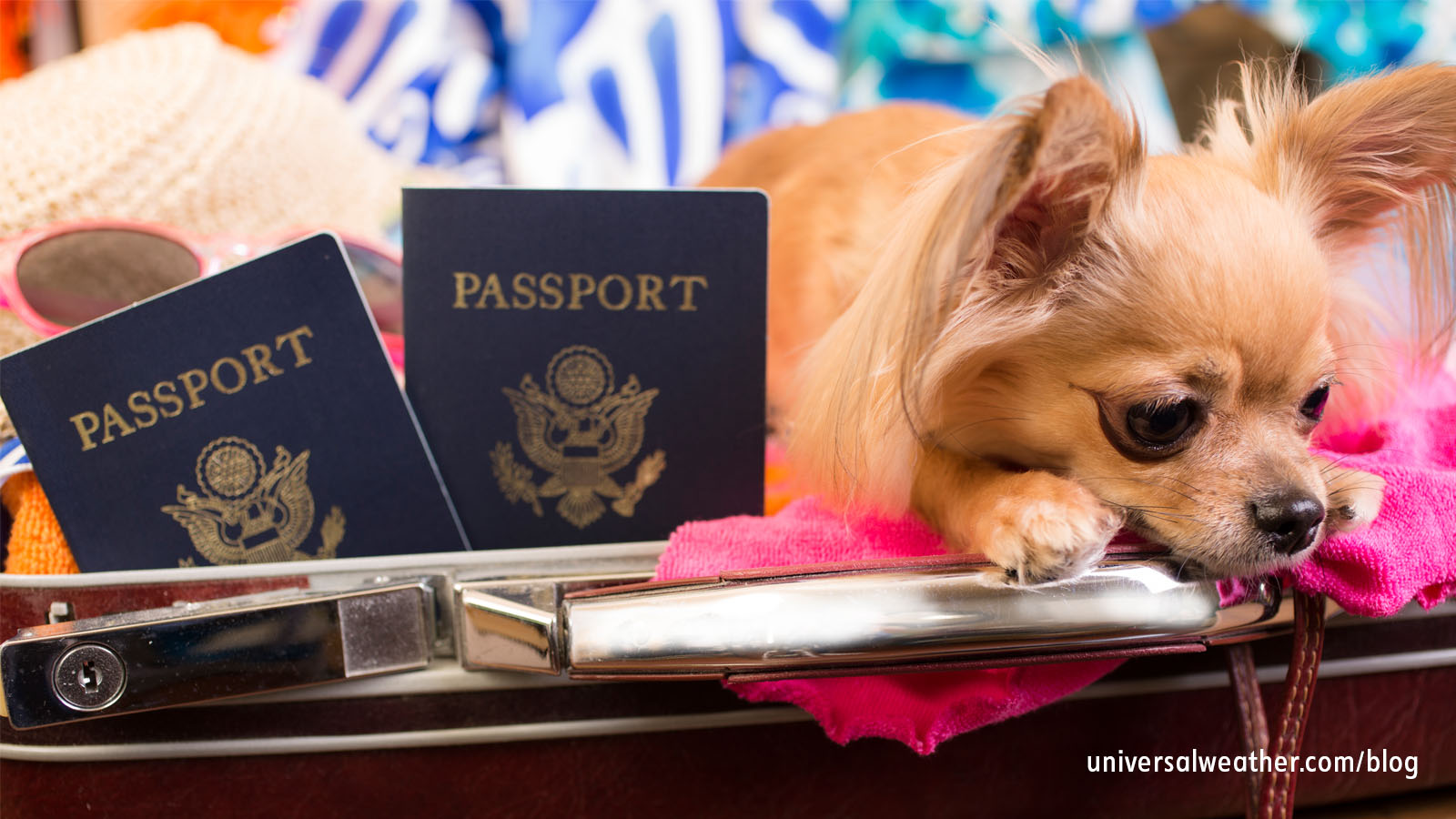Understanding International Restrictions for Bringing Pets Onboard a Business Aviation Flight

You’re carefully planning a complex international trip. Everything is going smoothly except for one thing: The client’s pet has ended up in quarantine on the other side of the world. That type of situation can make an otherwise perfectly executed mission a failure in the eyes of the aircraft owner. That’s why it’s important to work with your 3rd-party provider and local ground handlers well in advance whenever a pet is to be transported aboard a business aviation aircraft.
The following is an overview of what you need to know:
1. Know the requirements about bringing pets onboard
Most, if not all, countries have regulations and requirements governing entry and importation of pets. While general requirements are similar for many countries, there are regulatory nuances and different processes to consider for others. Basic requirements include evidence that the pet has received the latest vaccinations. Many countries also require you to have a "pet passport" and/or a microchip record inserted in the pet. At some locations, you’ll need to prove that the pet has been checked by a qualified vet within the past couple of weeks. Some countries require a local vet to meet the aircraft upon arrival to physically check the pet.
2. Pet restrictions may apply even on international tech stops
Onboard pets are seldom problematic on international tech stops so long as they remain onboard. Some locations will permit Fido or Fluffy to disembark in order to relieve themselves, as long as the animals do not enter the terminal. At other locations, pets are not permitted off the aircraft under any circumstances. In some cases, you may need to hire an airport officer to monitor your aircraft and ensure that no animal attempts to exit via the airstairs. There was a case in Cairo (HECA) where the tower observed a pet relieving itself on the ramp, and a fine was imposed. Should your tech stop turn into a longer stay – as a result of a mechanical issue, for example – an onboard pet could end up in extended quarantine.
3. Be aware of quarantine procedures
Many countries require that a pet go into quarantine upon arrival for 7-90 days, depending on the location. This can be especially difficult if a pet requires medication. Length of stay in quarantine is rarely negotiable. There was a case of a business aviation aircraft arrival in the UK where the pet had not been properly microchipped and was immediately placed in quarantine for 17 days. The owner had to depart to continue the trip and return to the UK to pick up the pet later. Barbados, China, India, and Japan can be particularly stringent on quarantine requirements. Japan will quarantine the animal for 90 days, and not all pets survive this process. China has a 30-day quarantine requirement that cannot be avoided. In India you may only bring a pet into Delhi (VIDP), Mumbai (VABB), Calcutta (VECC), Bangalore (VOBL), and Chennai (VOMM). In addition, you’ll need to arrange for a pet moving handling agent to handle the animal on arrival in India, as ground handlers cannot assist in this process.
4. Special permits may be required to import a pet
India requires a special permit, in addition to your landing permit, to bring a pet into the country. This "non-objection" permit requires five working days to obtain. You’ll also need a pet passport (obtainable from a vet) and up-to-date veterinarian certificate. Mexico allows a maximum of two dogs or cats per passenger with current vet certificates and rabies vaccine records. Spain permits dogs, cats, and ferrets to enter the country, provided that they use the same means of transport as their owner (maximum of two dogs, cats, or ferrets per passenger). Japan requires at least 40 days’ advance notice to bring a pet into the country. You may be requested to change your arrival date, or city of entry, depending upon availability of local quarantine facilities. On arrival in Japan, dogs and cats undergo import quarantine for up to 90 days to screen for rabies.
5. Be mindful of regulatory nuances when transporting pets
In the UK, a pet may be brought in on an aircraft that is an "approved carrier" to a UK pet-nominated airport. For more information on operating to the UK with pets onboard, see our article titled "Pet Passport Travel – Now Available at London Stansted Airport (EGSS)." In Ireland, you may only bring a dog into Shannon (EINN) if the flight originates from the UK. Otherwise, you’ll have to go through Dublin (EIDW) for the pet to exit the aircraft. In South Africa, quarantine requirements are determined based on where the aircraft and animal arrive from.
6. For more information
Some countries make the requirements to bring pets to their country available online. Below you will find some countries that provide that information online:
Conclusion
Don’t assume that it’s easy to bring an animal into any country. Even though you may have the standard documentation, each country differs in terms of requirements. Best practice is to ensure that you have a pet passport and microchip organized in advance. Give yourself at least two weeks’ additional lead time to research and obtain latest requirements for all countries you plan to visit with your pet.
Questions?
If you have any questions about this article or plan to operate internationally with a pet, contact me at danielcrouch@univ-wea.com.



